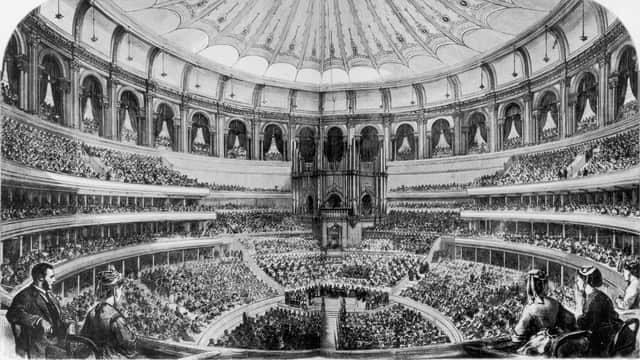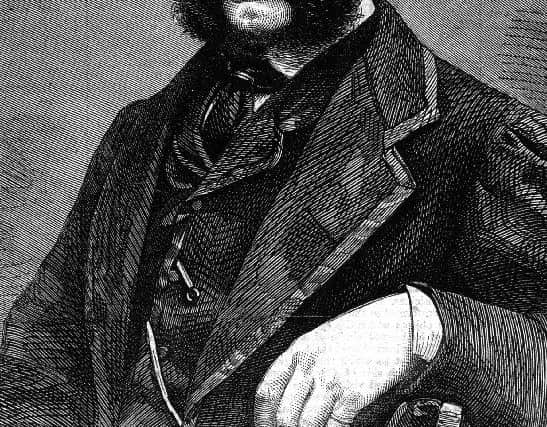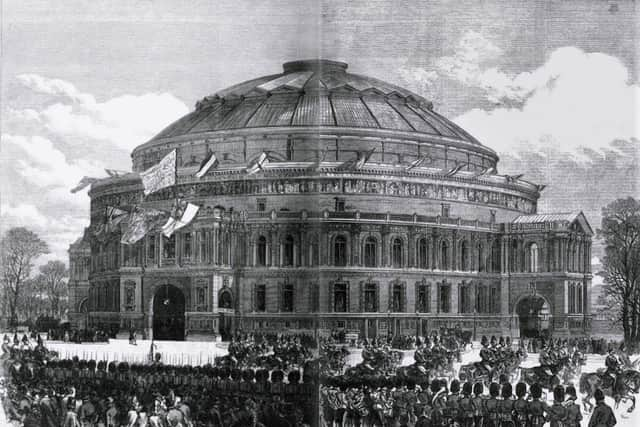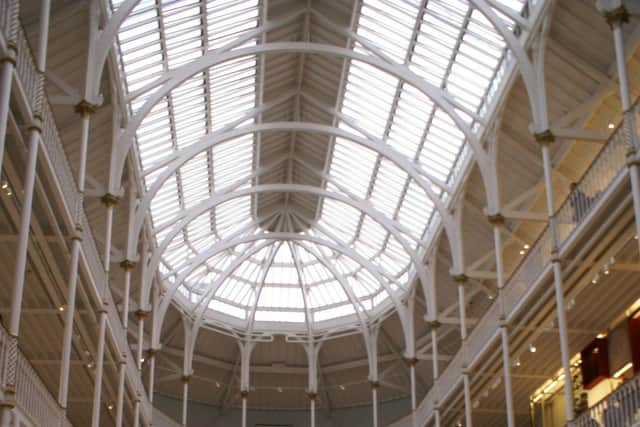Local rubber bath inventor, Captain Fowke, designed the Albert Hall


Men and women of all ages, from every walk of life and from north, south east and west, who’ve done something remarkable or memorable or unusual (or all three!) and whose story is well worth telling.
Some are people we knew a little or a lot about, but others are folk who were virtually unheard of until a reader shared some lost or forgotten facts and figures.
Advertisement
Hide AdAdvertisement
Hide AdAn e-mail arrived over the weekend about someone who, for many of us, is definitely one of the latter.


It began “Captain Francis Fowke, the architect who designed the Royal Albert Hall, was born in Ballysillan, north Belfast in 1823.”
His other notable buildings were “the 1862 International Exhibition Hall in London, the National Gallery of Ireland, the Royal Museum of Scotland, and parts of London’s Natural History and Victoria and Albert museums.”
According to the e-mailer Francis Fowke attended the Royal School Dungannon and then the Royal Military Academy in Woolwich after which he obtained a commission in the Royal Engineers and served in Bermuda and Paris.
Advertisement
Hide AdAdvertisement
Hide AdBack in the UK Captain Fowke was appointed architect and engineer in charge of the construction of several important government buildings and “he was also an inventor.”


The e-mail outlined some of his patents - “a military fire engine, a folding camera, a portable India-rubber bath, a travelling scaffold and a collapsible military pontoon bridge.”
The note had a sad ending - “he died of a burst blood vessel in 1865” - only 42 years old, but what an amazing amount he packed into his short life!
The reader’s note closed with a tribute to him by Sir Henry Cole, the enormously influential English Civil Servant and patron of all things cultural - “England has lost a man who felt the spirit of his age, and was daring enough to venture beyond the beaten path of conventionalism... a man of science, possessing a fertility of invention which amounted to genius.”
Advertisement
Hide AdAdvertisement
Hide AdThere’s more about Belfast’s unhailed architectural genius on the Royal Institute of British Architect’s history website, and from various other sources, which I’ll return to in the near future.


But for now - an outline introduction.
From around 1853 Prince Albert and Henry Cole had been investigating the possibility of building a music hall in South Kensington.
They’d hoped to include a concert hall in the 1862 International Exhibition but there wasn’t enough funding. Albert was a great lover of music and a talented musician and Cole once said: “in my opinion, music unites in the highest degree both Science and Art.”
The new building, which was intended to be for a site north of the Royal Horticultural Society’s Gardens, was to be called the Central Hall of Arts and Science.
Advertisement
Hide AdAdvertisement
Hide AdAfter the death of the Prince in 1861, Cole became the driving force behind the project.
It was renamed the Royal Albert Hall by Queen Victoria when she laid the foundation stone in May 1867.
It was designed by Fowke but completed by another military engineer, Major-General H.Y.D. Scott, after Fowke’s sudden death in 1865.
Both were engineer-designers closely associated with Cole and the South Kensington Museum.
Advertisement
Hide AdAdvertisement
Hide AdIn general terms the hall’s overall form and internal layout was Fowke’s and its exterior look and character was Scott’s. Fowke designed the now iconic elliptical amphitheatre, consisting of an arena, two tiers of boxes, and above that an art gallery or promenade.
After his death the highly acclaimed and hugely experienced German architect Gottfried Semper was suggested as his replacement.
But the commissioners had concerns about employing a foreigner, and also feared that a well-known architect of Semper’s status would be enormously expensive to hire.
So Fowke’s plans and drawings stayed in the department’s drawing office, with the Director of New Buildings, Major-General Scott, in charge.
Advertisement
Hide AdAdvertisement
Hide AdFowke’s interior design and floor plans could only be slightly modified by Scott as bookings for boxes and seats in the auditorium had already begun!
The Major-General increased the width of the now-familiar oval plan, partly, it’s believed, to improve the acoustics and to introduce an upper balcony.
For the exterior Scott had more room to manoeuvre and simplified Fowke’s design, with less overt classical detailing.
One striking change he made was the addition of a mosaic frieze, which continues all the way round the building below the main cornice.
Advertisement
Hide AdAdvertisement
Hide AdThe ladies of the South Kensington Museum’s mosaic class made the 800 square slabs which make up the frieze!
Fowke’s handsome Royal Scottish Museum, Edinburgh, begun in 1861, is a grand essay in the Lombardic Renaissance style, with an elegant galleried Great Hall of iron and glass.
Now the National Museum of Scotland, Fowke’s light-flooded Grand Gallery is awesome to behold.
Most experts and architectural historians agree that his designs have been underrated, but there can be little argument about his finesse in building large-scale structures and impressive public buildings.
Advertisement
Hide AdAdvertisement
Hide AdThere’ll be more here in the near future about his other remarkable creations - a military fire-engine, a folding bellows camera, a portable India-rubber bath, mobile scaffolding for building sites and a collapsible military pontoon.
A message from the Editor:
Thank you for reading this story on our website. While I have your attention, I also have an important request to make of you.
In order for us to continue to provide high quality and trusted local news on this free-to-read site, I am asking you to also please purchase a copy of our newspaper whenever you are able to do so.
Our journalists are highly trained and our content is independently regulated by IPSO to some of the most rigorous standards in the world. But being your eyes and ears comes at a price. So we need your support more than ever to buy our newspapers during this crisis.
Advertisement
Hide AdAdvertisement
Hide AdWith the coronavirus lockdown having a major impact on many of our local valued advertisers - and consequently the advertising that we receive - we are more reliant than ever on you helping us to provide you with news and information by buying a copy of our newspaper when you can safely.
You can also enjoy unlimited access to the best news from across Northern Ireland and the UK by subscribing to newsletter.co.uk
With a digital subscription, you can read more than five articles, see fewer ads, enjoy faster load times, and get access to exclusive newsletters and content. Visit https://www.newsletter.co.uk/subscriptions now to sign up.
Thank you